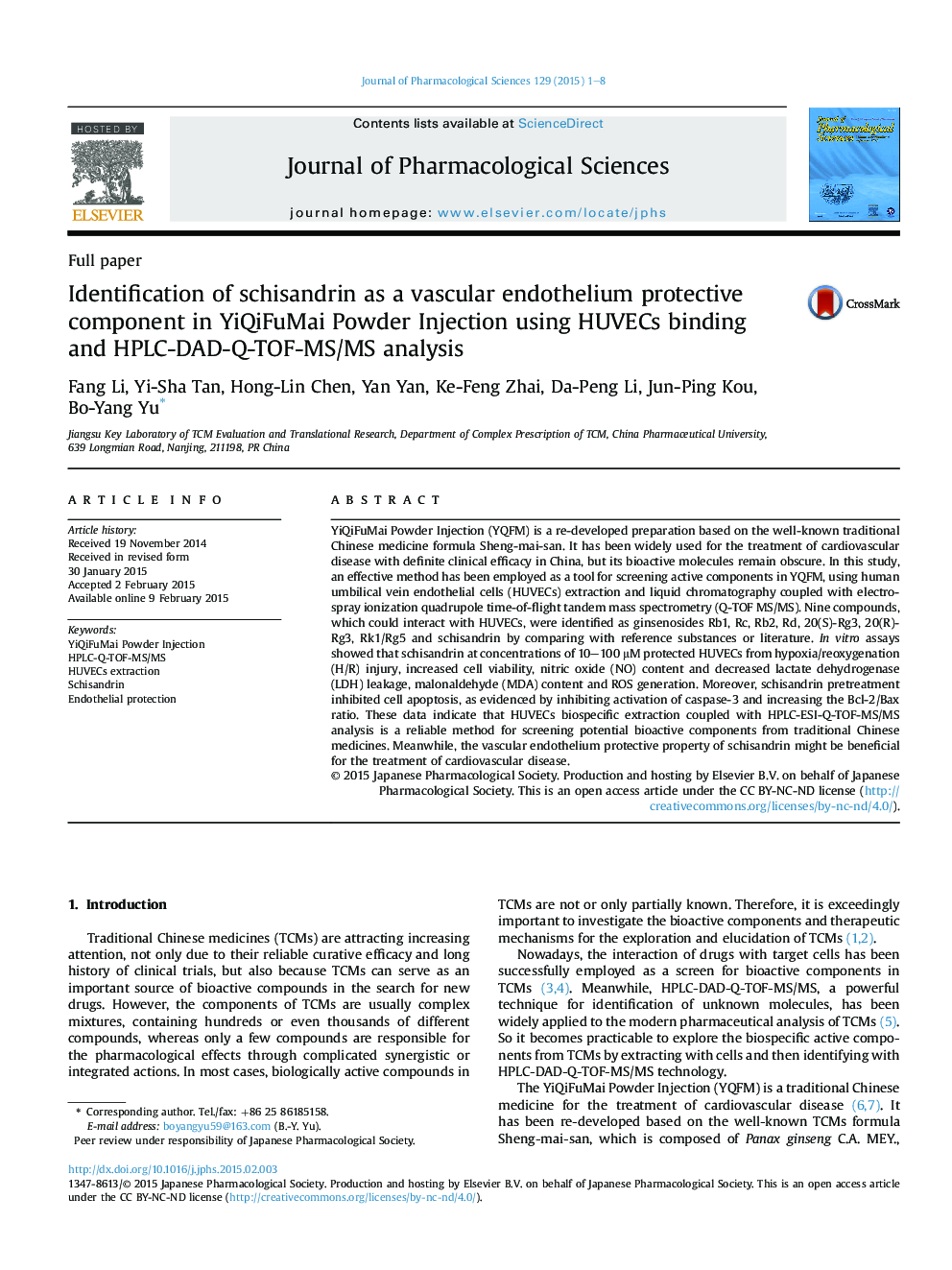| Article ID | Journal | Published Year | Pages | File Type |
|---|---|---|---|---|
| 2548905 | Journal of Pharmacological Sciences | 2015 | 8 Pages |
YiQiFuMai Powder Injection (YQFM) is a re-developed preparation based on the well-known traditional Chinese medicine formula Sheng-mai-san. It has been widely used for the treatment of cardiovascular disease with definite clinical efficacy in China, but its bioactive molecules remain obscure. In this study, an effective method has been employed as a tool for screening active components in YQFM, using human umbilical vein endothelial cells (HUVECs) extraction and liquid chromatography coupled with electrospray ionization quadrupole time-of-flight tandem mass spectrometry (Q-TOF MS/MS). Nine compounds, which could interact with HUVECs, were identified as ginsenosides Rb1, Rc, Rb2, Rd, 20(S)-Rg3, 20(R)-Rg3, Rk1/Rg5 and schisandrin by comparing with reference substances or literature. In vitro assays showed that schisandrin at concentrations of 10–100 μM protected HUVECs from hypoxia/reoxygenation (H/R) injury, increased cell viability, nitric oxide (NO) content and decreased lactate dehydrogenase (LDH) leakage, malonaldehyde (MDA) content and ROS generation. Moreover, schisandrin pretreatment inhibited cell apoptosis, as evidenced by inhibiting activation of caspase-3 and increasing the Bcl-2/Bax ratio. These data indicate that HUVECs biospecific extraction coupled with HPLC-ESI-Q-TOF-MS/MS analysis is a reliable method for screening potential bioactive components from traditional Chinese medicines. Meanwhile, the vascular endothelium protective property of schisandrin might be beneficial for the treatment of cardiovascular disease.
